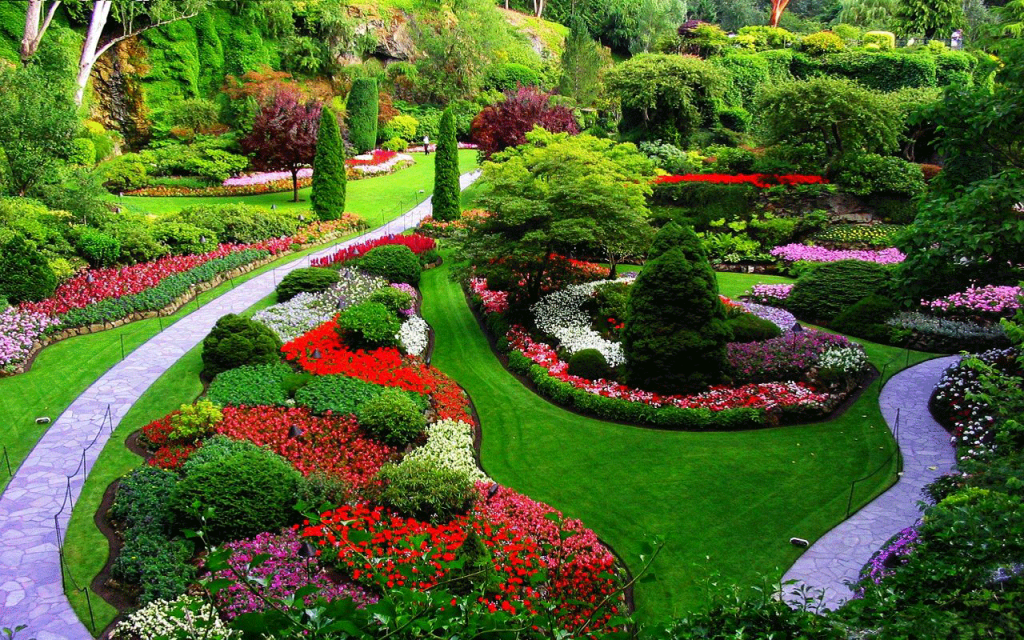Hilton Head Landscapes - The Facts
Hilton Head Landscapes - The Facts
Blog Article
Fascination About Hilton Head Landscapes
Table of ContentsUnknown Facts About Hilton Head LandscapesThe Basic Principles Of Hilton Head Landscapes Hilton Head Landscapes for BeginnersThe Best Strategy To Use For Hilton Head LandscapesThings about Hilton Head LandscapesRumored Buzz on Hilton Head LandscapesThe Only Guide to Hilton Head Landscapes
Line creates all forms and patterns and can be used in a selection of methods the landscape. Line in the landscape is produced by the side in between two materials, the rundown or shape of a type, or a lengthy direct feature. Lines are a powerful device for the designer since they can be used to produce a limitless variety of shapes and types, and they control activity of the eye and the body.
Lines in the landscape. The residential properties of lines figure out just how individuals respond to the landscape, both mentally and literally.
Excitement About Hilton Head Landscapes
Bent lines create an informal, all-natural, loosened up character that is connected much more with nature and unbalanced balance. Rounded lines relocate the eye at a slower speed and include mystery to the space by producing surprise views.
Vertical lines in the landscape include high, slim plant product, such as trees, or high structures, such as an arbor or a bird residence on a pole. Straight lines relocate the eye along the ground plane and can make a room really feel bigger. Reduced lines are more controlled and create a sensation of rest or repose.
Facts About Hilton Head Landscapes Revealed
Lines are additionally created by the upright kinds of constructed attributes and plant material. There are three primary line kinds that produce form in the landscape: bedlines, hardscape lines, and plant lines.
Bedlines connect plant product to your house and hardscape because the eye adheres to the line, moving the stare through the landscape. Hardscape lines are created by the side of the hardscape, which defines the developed framework. Line can also be created by lengthy and slim materials, such as a fencing or wall surface.
More About Hilton Head Landscapes
Type is located in both hardscape and plants, and it is usually the leading visual aspect that spatially organizes the landscape and often figures out the style of the garden. The kind of frameworks, plant beds, and garden accessories also identifies the overall form motif of the garden. Formal, geometric types consist of circles, squares, and polygons.
Plants develop form in the garden with their details or silhouettes, yet form can likewise be specified by a gap or negative space in between plants - bluffton landscaping (https://www.kickstarter.com/profile/h1tnhdlndscps/about). Circles can be complete circles, or they can be split into fifty percent circles or circle sections and combined with lines to develop arcs and tangents
Everything about Hilton Head Landscapes
Circles are a strong style kind because the eye is constantly attracted to the facility, which can be used to highlight a focal point or attach other types. Circular types in hardscape and yard panels.
The square type can additionally be fractional and used continuously to produce a grid pattern. Unlike circles, squares are stronger on the edges, which can be lined up or overlapped to create unique patterns and more intricate kinds.
Twisting lines usually imitate the all-natural training course of rivers or streams and can be defined as smooth lines with deeply curved wavinesses. Meandering lines (Number 3) function well for paths, plant bedlines, and completely dry stream beds. Twisting lines can add rate of interest and secret to a garden by leading audiences around edges to find new sights and areas.
The Hilton Head Landscapes Diaries

Common plant kinds are well established and standardized, as form is the most consistent and well-known quality of plants. Type can additionally be developed through the massing of plants, where the total mass creates a various type than an individual plant.
An extremely different kind needs to be used with careone or two job well as a centerpiece, but way too many produce turmoil. Natural plant types, instead of over-trimmed kinds, should develop the bulk of the composition. The significance of overall form is essentially dependent on the seeing perspectivethe type of a tree can appear quite various to a person standing under the cover versus checking out the tree from a range in an open area.
Hilton Head Landscapes Fundamentals Explained
Plant kinds also develop and define deep space or open rooms between the plants, producing either convex or click to investigate concave kinds in the voids. High-arching tree branches normally create a concave open area under the branches, and a round cover with reduced branches fills up the space to develop a convex form outdoors space under the tree.

Report this page